Earth Clocks

It doesn't really seem difficult. Normally the sediments are placed on horizontal layers, one over another, being younger than the lower of the upper layer. Specifically they are called law of horizontality and principle of overlapping layers, respectively. They were exposed in 1669 by a naturalist named Steno and, although they are simple, they are very useful for chronologically ordering the layers.
However, there are phenomena that break the Steno principle: earthquakes, eruptions, folds... If so, there are always traces left, which geologists seek. These tracks are polarity criteria that allow you to know if there have been changes.
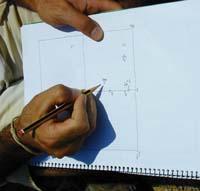
For example, observing the footsteps know what layer there was at the time when you stepped on it, since it is impossible to tread the bottom. Water drops or crack marks are always on the surface. Another way to rely on hollow fillers. When there is a gap and it is not filled in its entirety, the filling is always at the bottom, so that, once formed the rock, the position of the filling indicates the bottom. They are called geopetal betas.
However, like all laws, the principle of overlap also has exceptions. Murelaga tells us about the terraces and caves of the rivers. In fact, on the banks of the rivers the younger layers are the lower ones, since the rivers always go into the ground. In the caves, on the contrary, you can fill the gap with sediments and, once full, create a stream below. If the water then disappears, the bottom hole is also filled and, even if it is below, it is younger than the one above.
Relative, absolute
Except for exceptions, the layer overlay principle is very useful for sorting layers over time. However, it does not indicate the age of the layers. Therefore, it is a relative, not absolute dating method.
Fossils also serve for relative dating, as each epoch contains its own fossils. Archaeologists, for example, use industry, that is, man-made utensils, to differentiate the times: Magdaleniense, Solutrense... These cultures are defined by their own industry.
However, we must bear in mind that the industry is not synchronous, it is not created and developed simultaneously throughout Europe. On the contrary, by the time it arises in one place and expands to others, time passes. This creates problems in the development of dating and correlations.
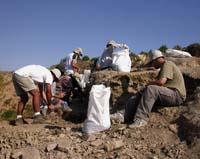
Despite the problems, after chronologically sorting the layers by stratigraphy, you can place each in its time from the fossils. But with this you cannot specify age, for this you must use absolute dating.
The younger the rocks, the easier the absolute dating. If you are younger than 50,000 years ago and have organic matter, you can use the 14 carbon method. It is the simplest and most used method. In addition, it has a small error, close to one hundred years or even lower.
Radioactive isotopes
The truth is that living beings absorb the 14 carbon around them while living. However, from the moment of his death, the 14 carbon begins to disappear. The pace of disappearance is known, so the footprint can be known by comparing the remaining 14 carbon with the existing one in the atmosphere.
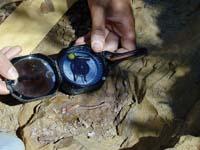
Carbon isotopes are not only used to calculate age. For example, Murelaga relies on the carbon and nitrogen isotopes of deer fossils to find out what these animals ate. Thanks to the diet, Murelaga deduces the climate of that time.
However, carbon 14 has a limit: it does not serve to date rocks prior to 50,000 years, since in that period of time the practically totality of carbon 14 containing the traces is disintegrated.
Data based on isotopes in rocks can also be made. In the rocks they work with isotopes of uranium, rubidium, potassium, etc. Their average life is much higher than that of 14 carbon, so they are suitable for dating rocks over 50,000 years ago.
Thus, with isotopes with a slow rate of disintegration millions of years can be regressed. The isotope of carbon 14 has an average life of 5,730 years, that is, in the year 5,730 it loses half of the carbon 14 that the fossil has. Conversely, the process of converting uranium-235 to lead -207 has an average life of 700 million years, while the lead generation process from 238 to uranium-206 is 4.5 billion years. The error is also of this measure, that is, in dates of 3,000 million years there may be an error of one or another million.
Detectives of the past choose according to the age of the rock on which isotopes base the dating. The older the rock, the longer its half-life. In addition to those already mentioned, they use rubidium extrontium, potassium argon, thorium uranium and other systems.
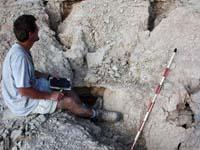
Magnetism
However, researchers often employ several methods on the same rock to make the calculation as accurate as possible. Murelaga, for example, sometimes uses paleomagnetism. The method is based on the polarity changes of the Earth's magnetic field and, according to it, is a mixture of relative and absolute dating.

Currently, the negative pole is close to the north geographic pole, but in periods between 10,000 and 25,000 years this polarity is exchanged. Polarity change occurs simultaneously throughout the planet, so it is general. Thus, if the rock contains iron or other magnetic mineral and is on a molten material, the mineral is always oriented towards the magnetic pole.
Therefore, the orientation of the mineral suggests polarity and it is easy to see whether or not it coincides with the current one. This does not mean in itself that rock is noica, since polarity changes are cyclical, but paleontologists, measuring polarity in several overlapping layers, form a paleomagnetic column. It is a kind of code bar, in which the sections are represented in black and white with current polarity and against.
In the next step, the paleomagnetic column is assimilated to that of volcanic rocks emerging from the ocean bottoms. In fact, in the volcanic rocks of the ocean dorsal, the exact dating with the isotopes is used as a reference. In addition, fossils are used to "anchor" polarity changes, that is, to know more or less where the paleomagnetic column that is desired to date in the reference of the dorsal ones.
It is a complex method, but Murelaga, for example, has dated the deposits of the Bardenas. However, sometimes there are problems, for example when a river has dragged part, or when it orients water flows minerals and not magnetisms. Except in these cases, paleomagnetism is a valid method that allows travel far back in time, as it also serves to date rocks over 100 million years old.
Rings and others
Tree trunks also have a barcode: rings or growth lines. They also serve to make datations. The ring technique, called dendrochronology, is to relate growth lines to weather and weather.
In fact, the trees here are created a ring a year. Elsewhere, however, it is not. For example, in tropical rainforests plants grow constantly, while in very dry summer areas there may be more than one ring in the same year. Therefore, they do not use dendrochronology.
However, in these latitudes the trees grow more in summer than in winter. Since the initial and final wood of the growth period is different, it is possible to separate the rings. Also, the rings have a different width due to the factors that affect the growth (temperature, pollutants, etc. ). From there they get additional information, for example, how time has changed.
As with paleomagnetic columns, it is necessary to compare the ring sequence with a model. In this way it is founded, placed in chronology. On the other hand, starting with the living trees and overlapping them with pieces of dead wood, a long chronology can be achieved. Thus, the oldest trunk, dated with dendrochronology, is 7,000 years old.
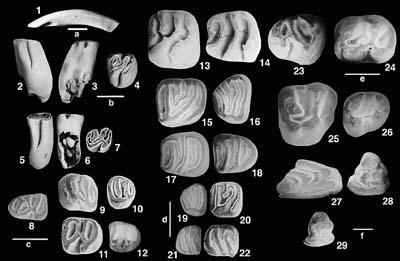
A lady should not be asked how old she is, but time detectives use all the tricks at their disposal to invent the age of Earth.





